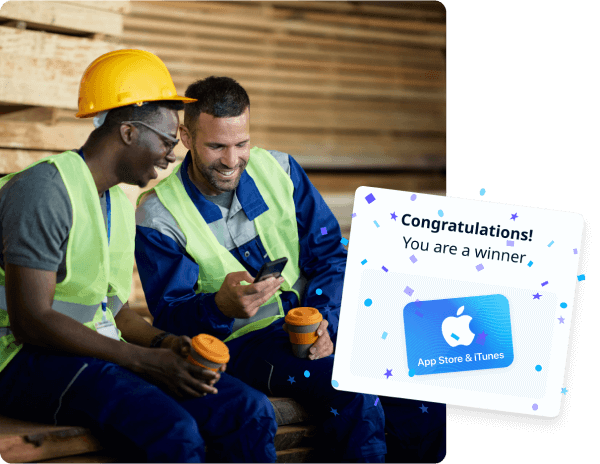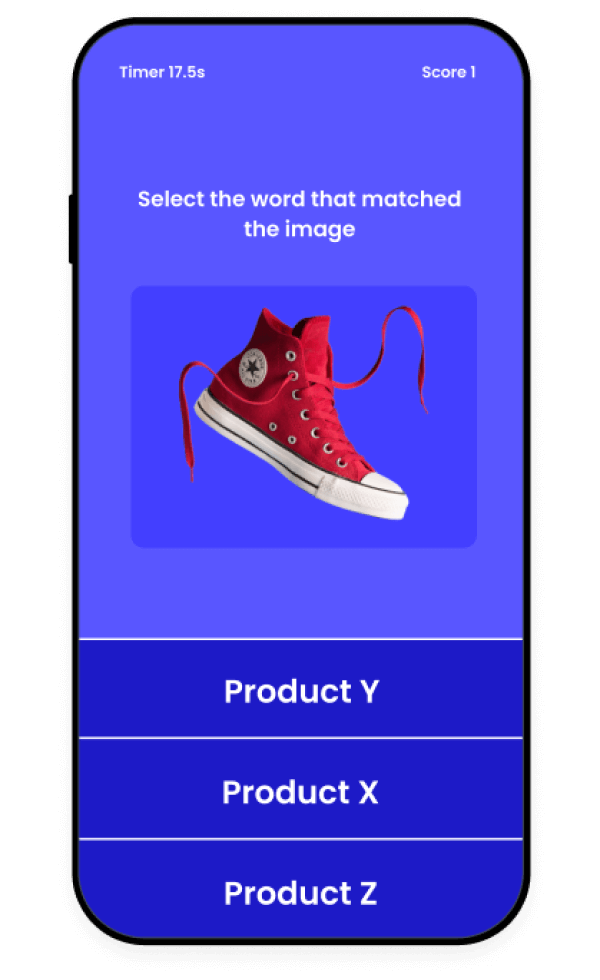10 Employee training methods for workplace training

Training is only as effective as you want it to be if you know the right employee training methods to incorporate into your training programs. But how can you know which one is the best to use?
To find out, we've compiled a list of the best employee training methods that'll work for whatever training program you want to create.
Why is it important to choose the right employee training method?
Choosing the right employee training method is critical to efficient learning, adjusting to different types of learners, and making the most of your resources. It keeps training relevant to your team’s job roles and encourages engagement and motivation while staying adaptable to industry changes.
This approach gives clear metrics for assessing progress, accommodates growth, and meets regulatory requirements, all while making the most out of your training budget.
Another thing is that the correct employee training method fosters employee satisfaction, which, in turn, enhances retention rates and contributes to your organization's overall success. It's a strategic decision that tailors training to your unique workforce, driving skill development, motivation, and productivity in your team.
Employee training methods # 1 - Gamification
Enhancing learner engagement is essential to prevent training from becoming monotonous. Incorporating gamification into your training materials can be a powerful way to maintain learner interest and increase overall engagement.
Gamification involves transforming conventional digital learning content into a game-like format, featuring elements such as drag-and-drop activities, sequencing challenges, and matching games. By making workplace training fun, employees become more productive learners, as it no longer feels dull or obligatory.

EdApp's free LMS offers all these gamification features, allowing you to infuse quizzes and courses with interactive elements. Additionally, EdApp's leaderboards can introduce a competitive dimension to the training experience by showcasing each learner's progress relative to their peers.
This can motivate individuals to boost their learning output and advance along their learning journey.
Start your gamification journey with EdApp today.
Employee training methods # 2 - Microlearning
Microlearning, as the term suggests, revolves around the delivery of short but highly focused courses that typically wrap up in under 20 minutes. Rather than boring learners with a ton of extensive PDF modules and lengthy PowerPoint presentations, microlearning serves up this knowledge in bite-sized portions.

Studies have shown that this approach can enhance focus and boost long-term retention rates by up to 80%. It's also a handy tool for delivering any and all types of training, allowing your employees to swiftly grasp the basics and refresh their knowledge.
In any type of training, maintaining 100% learner engagement can be a challenge. That’s why it's essential to keep your training materials concise, straightforward, and easy to complete to make sure learners stay engaged throughout the process.
Employee training methods # 3 - Mentoring
Mentoring, in the realm of L&D, is one of the training methods for employees that's not just a buzzword in HR but a true catalyst for company growth. These mentoring sessions are like treasure troves where wisdom and experiences are exchanged freely. Here, mentors generously pass on their knowledge and guidance to their eager mentees, setting them on the path to success.

But it's not a one-way street! Mentees actively contribute, too. They share their feedback, insights, and fresh perspectives, which adds an extra layer of value to these mentoring encounters.
In this dynamic relationship, mentors also get the chance to put their expertise to the test, refining their own skills and gaining new outlooks from their mentees that can supercharge their own performance at work.
What's more, these connections can blossom into fruitful partnerships, forging a strong bond between team members and leaders that can be a driving force for your organization's success.
Employee training methods # 4 - Peer-to-peer learning
Peer learning involves learners rolling up their sleeves and creating and delivering training content together with their teammates or training buddies. It's all about teamwork, collaboration, and boosting participation and trust, which, let's be honest, is like gold in the world of remote training.

And the best part? Getting peer learning into your training program is a walk in the park. Just kick things off by dishing out a handful of intriguing topics for your teams or groups to chew over. Each learner takes the stage to present their chosen topic to the group, and voila! You're cooking with gas.
Plus, if you want to keep things on track, you can have a friendly moderator keep the discussions in line during your learning session. It's training but with a dash of camaraderie and a pinch of teamwork for that extra flavor.
Employee training methods # 5 - Self-paced learning
Alright, let's talk about self-paced training, or, as some call it, asynchronous learning. This is the kind of training where your learners get to be the captain of their own ship. They set the pace; choose your learning style; it's all about what suits them best. And you know what? It's a lifesaver for folks juggling work and training.

But it's not just about convenience. Self-paced learning is a secret weapon for leveling up their skills. It allows them to focus extra time on those tricky topics without anyone breathing down their neck. It's like having remote control over their learning journey. No external pressure—just them, their goals, and the knowledge they’re hungry for.
Employee training methods # 6 - Learning Through Teaching
One of the types of training methods you’d want to consider is learning through teaching. This technique lets your trainees step into the shoes of a teacher, explaining ideas to their fellow learners. It's like a triple win! They’re not only reinforcing their understanding but also sharpening those communication skills and giving their self-confidence a boost.

Now, here's the kicker: when they’re tasked with breaking down complex ideas into plain and simple language, it's like a mental workout. They’re not just learning; your learners are supercharging their comprehension, cranking up critical thinking, and turning up the empathy dial for the learning process.
It's like pouring rocket fuel into their learning engine. So embrace this active learning approach and get ready for a more engaging and effective learning adventure!
Employee training methods # 7 - Socratic Questioning
This employee training method involves leading your team through a series of thought-provoking questions designed to stimulate critical thinking. By prompting learners to assess assumptions, evaluate evidence, and consider various perspectives, it fosters a deeper comprehension of concepts and encourages the development of independent reasoning.

This technique not only nurtures the growth of problem-solving skills but also enhances engagement and empowers learners to proactively seek knowledge. It sets the stage for a dynamic learning environment where inquiry and exploration thrive, promoting a culture of continuous learning and intellectual curiosity.
Employee training methods # 8 - Flipped Classroom
The Flipped Classroom method transforms the conventional learning model by requiring learners to independently study foundational materials before in-person sessions. This training technique improves valuable face-to-face time for actively engaging learners in skill application, addressing queries, and enhancing understanding through participatory activities.

Similar to other active learning strategies, the flipped classroom empowers learners to assume greater responsibility for their educational journey. It shifts the emphasis from passive content consumption to dynamic participation, fostering critical thinking, independent exploration, and a more interactive and effective learning experience.
Employee training methods # 9 - Role-Playing and Simulations
Role-playing and simulations offer your learners the opportunity to step into different roles or immerse themselves in simulated environments to tackle challenges. By promoting the application of knowledge across diverse contexts, you're not only enhancing your learners’ experiential learning, critical thinking, and empathy but also refining their skills within a controlled yet dynamic setting.

These active learning methods also foster collaboration, adaptability, and creativity among learners. This, in turn, equips them to excel in real-world scenarios where complex problem-solving and interpersonal skills are paramount.
Employee training methods # 10 - Webinars
Webinars represent an online training approach featuring live, informative sessions delivered over the Internet. They are a digital evolution of the traditional seminar-style learning from which their name originates.

Webinars are frequently employed for one-to-many lectures and various presentations, often incorporating features like screen-sharing, live demonstrations, and the involvement of multiple primary presenters.
While webinars are primarily conducted in real-time, they can also be recorded for future reference or to accommodate new learners. Additionally, participants have the convenience of revisiting webinar recordings if they missed any part of the session.
What are the best ways to train your employees?
Training employees effectively is vital for organizational growth and success. The best ways to train your employees often involve a combination of methods tailored to your organization's needs and goals. Here are some of the most effective approaches:
1. On-the-Job Training (OJT): This hands-on training method allows employees to learn while performing their regular tasks. It's particularly useful for skill-based roles.
2. Mentoring and Coaching: Pair experienced employees with new hires to facilitate knowledge transfer, skill development, and personalized guidance.
3. Classroom Training: Traditional classroom-style training is ideal for theory-based learning and can include lectures, presentations, and group discussions.
4. E-Learning: Online courses and modules offer flexibility, self-pacing, and accessibility, making them suitable for remote teams.
5. Workshops and Seminars: Interactive sessions encourage participation and skill development. These can be conducted in-house or externally.
6. Simulations: Real-world scenario simulations allow employees to practice decision-making and problem-solving in a risk-free environment.
7. Job Rotation: Rotate employees through different roles to give exposure to various tasks and responsibilities.
8. Team-Based Training: Collaborative projects and activities promote teamwork and communication skills.
9. Video and Multimedia Training: Visual aids, videos, and interactive multimedia resources make learning engaging and accessible.
10. Gamification: Incorporate game-like elements to make training fun and motivating. Employees can earn rewards for completing tasks.
11. Microlearning: Deliver content in small, digestible chunks, making it easier for employees to absorb information.
12. Peer Learning: Encourage employees to share knowledge and learn from their peers through discussions and knowledge-sharing sessions.
13. Feedback and Evaluation: Regular feedback and assessment help employees track their progress and identify areas for improvement.
14. Continuous Learning Programs: Promote a culture of continuous learning and offer resources for employees to upskill and stay current in their field.
15. Tailored Training Plans: Develop customized training plans based on individual employee needs and career goals.
The best approach often combines these methods to create a well-rounded training program that addresses the unique requirements of your organization. It's important to continually assess the effectiveness of your training methods and make adjustments as needed to guarantee ongoing employee development and organizational success.
EdApp is a mobile learning management system designed for today’s digital habits, delivering more engaging and effective micro-learning directly to learners anytime and anywhere.
Sign up for this employee training tool today.
Author
Stephanie Escuadro
Stephanie is an eLearning content writer for EdApp, a microlearning solution designed for today's digital habits. She creates content about cutting-edge learning technologies and resources to help companies deliver great training experiences. When not absorbed in writing, she spends her time taking care of her dog and binge-watching.
